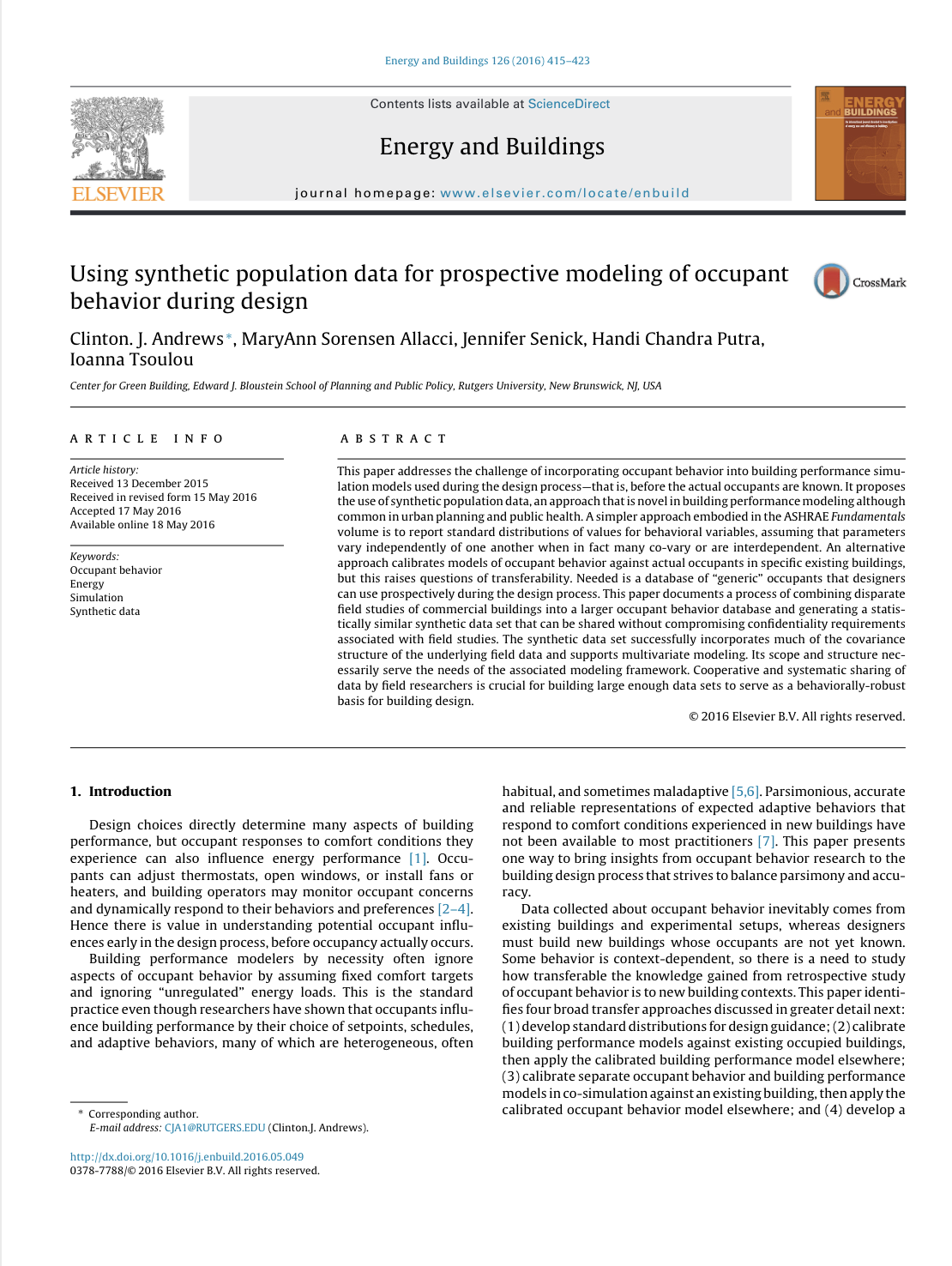This paper addresses the challenge of incorporating occupant behavior into building performance simulation models used during the design process—that is, before the actual occupants are known. It proposes the use of synthetic population data, an approach that is novel in building performance modeling although common in urban planning and public health. A simpler approach embodied in the ASHRAE Fundamentals volume is to report standard distributions of values for behavioral variables, assuming that parameters vary independently of one another when in fact many co-vary or are interdependent. An alternative approach calibrates models of occupant behavior against actual occupants in specific existing buildings, but this raises questions of transferability. Needed is a database of “generic” occupants that designers can use prospectively during the design process. This paper documents a process of combining disparate field studies of commercial buildings into a larger occupant behavior database and generating a statistically similar synthetic data set that can be shared without compromising confidentiality requirements associated with field studies. The synthetic data set successfully incorporates much of the covariance structure of the underlying field data and supports multivariate modeling. Its scope and structure necessarily serve the needs of the associated modeling framework. Cooperative and systematic sharing of data by field researchers is crucial for building large enough data sets to serve as a behaviorally-robust basis for building design.
Using synthetic population data for prospective modeling of occupant behavior during design
Citation:
C.J. Andrews, M. Sorensen Allacci, J.A. Senick, H. Chandra Putra, and I. Tsoulou, Using synthetic population data for prospective modeling of occupant behavior during design, Energy and Buildings (2016 special issue on occupant behavior modeling): 415-423. https://doi.org/10.1016/j.enbuild.2016.05.049
